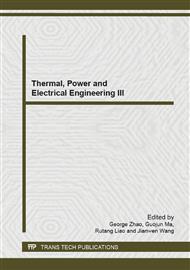p.152
p.157
p.161
p.165
p.170
p.176
p.182
p.189
p.193
Adaptability Evaluation of Conformance Control Agents in Low Permeability Reservoirs with Fractures
Abstract:
Several conformance control agents, including preformed particle gel, emulsion microspheres, continuous chromium gel and underground starch graft copolymer gel were evaluated. The properties such as gelation time and gel strength of gel, and expansion of particles and microspheres were tested at high temperature. Also, the injection pressure, plugging strength and resistance factor were measured using the artificial low permeability cores with fractures. It was shown that, for particle type conformance control agents, the particle size should be adaptable with the fracture width. Also, for continuous chromium gel, the added polymer concentration higher, the viscosity is higher, with higher plugging strength. The plugging and strength should be coordinated. The starch graft copolymer gel is easy to be injected into formation and has good plugging property. The results show that underground starch graft gel is more suitable for conformance control in low permeability formation with fractures.
Info:
Periodical:
Pages:
170-175
Citation:
Online since:
June 2014
Authors:
Price:
Сopyright:
© 2014 Trans Tech Publications Ltd. All Rights Reserved
Share:
Citation:


